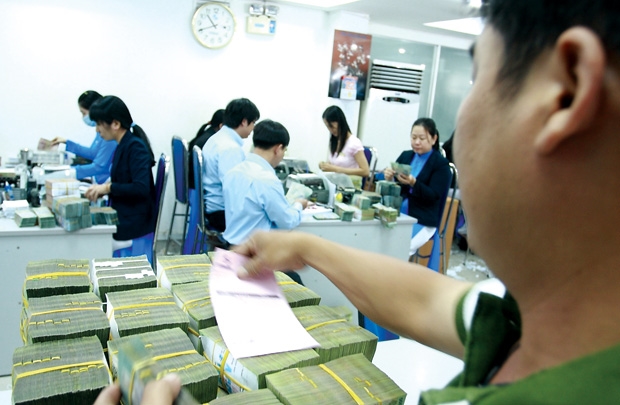|
Vietnam's
economic challenges in 2017
Vietnam economy
will encounter more difficulties in 2017 than in 2016 amid global
geopolitical changes and financial uncertainties, experts say.

Many
economists have said that the 6.7 percent GDP growth rate target set by the
government for 2017 was too ambitious as Vietnam only obtained 6.21 percent
growth in 2016.
In the context of the increased budget deficit, fiscal policy would not help support growth. Therefore, it is highly possible that monetary policy loosening will be maintained. However, some forecasts say it would be difficult to maintain the current stable interest rates. Some commercial banks have raised interest rates again, while bad debt, the exchange rate and higher requirements on capital adequacy ratio will affect the interest rate. If interest rates go up, this will affect businesses’ demand for lending. This means the credit growth plan may be unattainable and loose monetary policy will not bring desired effects, affecting the GDP growth plan.
In the last
three years, credit has been growing, nearly reaching 20 percent. Some
international institutions have warned that rapid monetary policy loosening
would bring high risks to the economy.
Regarding the dong/dollar exchange, Governor of the State Bank Le Minh Hung said the dong lost only 1.2 percent of its value in 2016. However, analysts do not believe that modest depreciation will continue in 2017. If US President Donald Trump expands fiscal policy, the US dollar would continue appreciating in the world market and capital flow would head for the US, thus putting pressure on new emerging economies like Vietnam. Meanwhile, the zero percent ceiling interest rate on dollar deposits has made it less attractive to bring dollars to Vietnam. The overseas remittances (kieu hoi) to Vietnam decreased sharply in 2016, but the foreign currency supply was still plentiful thanks to increased disbursement in FDI, the trade surplus and foreign portfolio investment. In 2017, the capital flow to Vietnam may change direction as a result of the FED decision on raising the prime interest rate, the US policy on attracting enterprises to invest in the US and the failure of the TPP trade agreement. Vietnam gained the trade surplus of $2.7 billion in 2016 thanks to the increase in exports and the decrease in imports caused by the domestic weak demand. Meanwhile, in 2017, Vietnam’s export would bear the impacts from the devaluation of many currencies in the world against the dollar. The stronger Vietnam dong would encourage imports, which means that the trade deficit may return. From July 2017, Vietnam may have to borrow ODA capital at market interest rates, while higher interest rates and shorter-term loans would affect Vietnam’s foreign currency supply source.
Kim Chi, VNN
|
Thứ Năm, 19 tháng 1, 2017
Đăng ký:
Đăng Nhận xét (Atom)
Không có nhận xét nào:
Đăng nhận xét